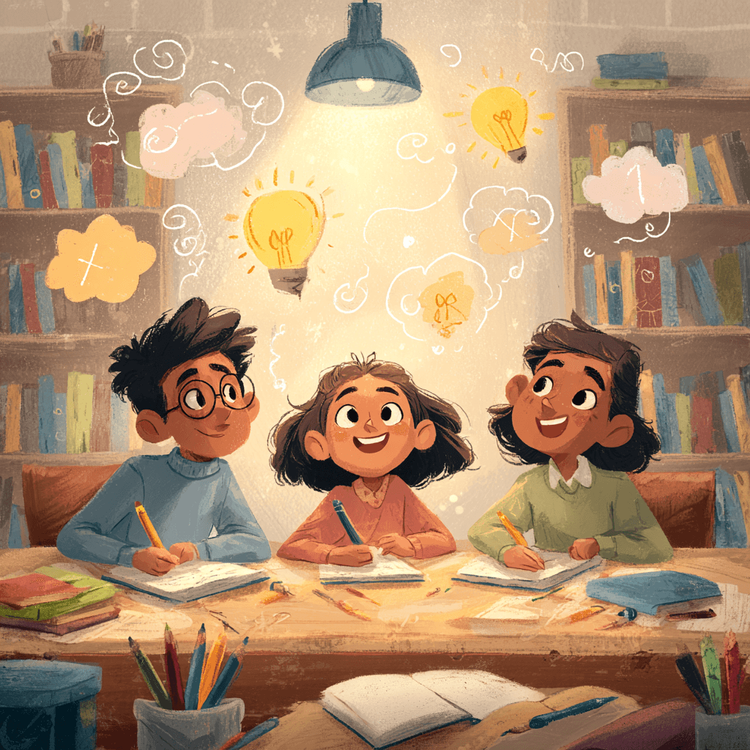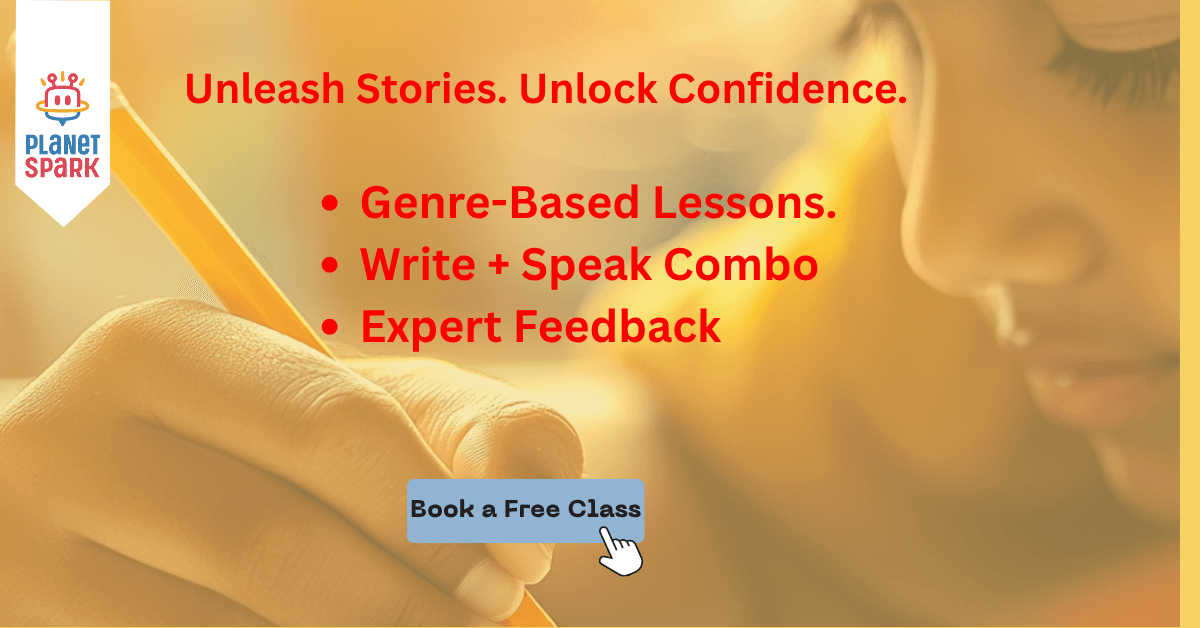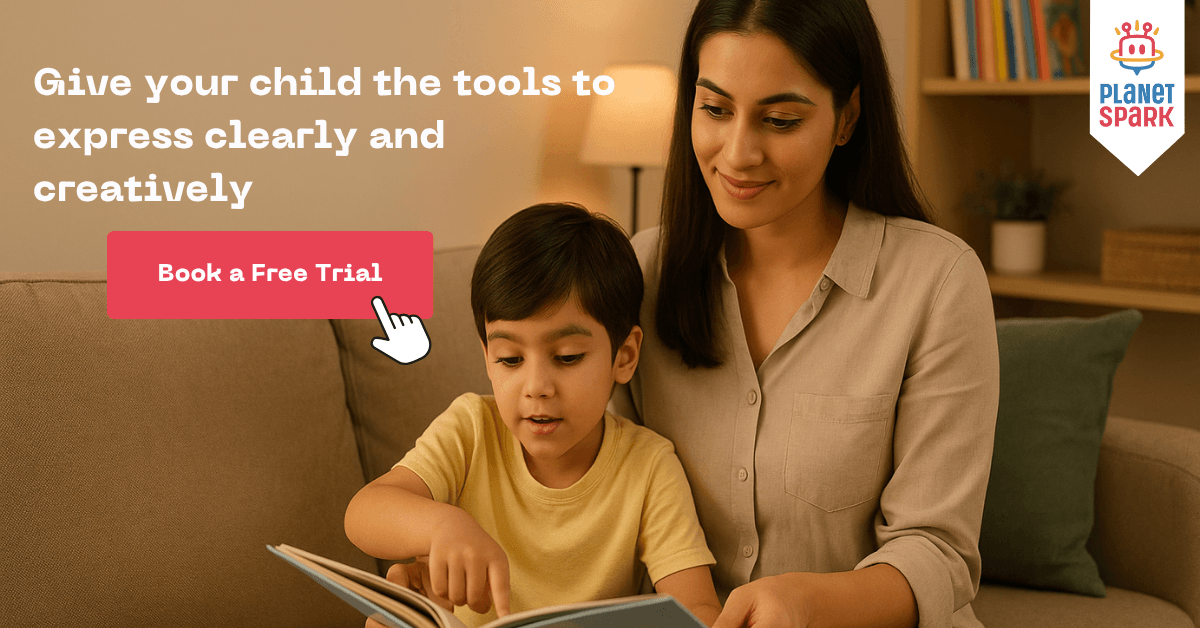Metric System of Measurement | A Young Inventor’s Story
Last Updated At: 30 Sep 2025
10 min read

Table of Contents
- The Beginning of a Measurement Revolution
- A Young Inventor’s First Encounter with the Metric System
- Why the Metric System Makes Storytelling Easier
- The Global Language of Inventors and Dreamers
- Building the First Prototype
- From Numbers to Narratives
- The Metric System as a Problem-Solving Tool
- Storytelling Through Science
- The Confidence to Dream Bigger
- Lessons from Arjun’s Journey
- Creativity Beyond Numbers
- Inspiring Children Through Real-World Applications
- The Role of Storytelling in Scientific Thinking
- Why Choose PlanetSpark?
When we talk about numbers, precision, and science, one term always stands out: the metric system of measurement. From classrooms to laboratories, from recipes to rockets, the metric system defines how we calculate, compare, and communicate measurements. But beyond science, have you ever wondered how it can influence imagination, innovation, and even someone’s destiny?
In this blog, we’ll explore the fascinating story of a young inventor whose life changed because of the metric system of measurement. Through this storytelling journey, you’ll discover not just the basics of the metric system, but also its hidden power in shaping creativity, problem-solving, and communication.
We’ll cover how the metric system started, why it became universal, how children and inventors benefit from it, and how understanding measurements can build skills like storytelling, innovation, and confidence. Each section will show a unique perspective on the metric system through the eyes of an aspiring young mind.
By the end of this blog, you won’t just know about the metric system of measurement; you’ll see it as a tool that empowers invention, self-expression, and storytelling.

The Beginning of a Measurement Revolution
The metric system of measurement was born in France during the 18th century with a simple yet revolutionary idea: a universal way of measuring everything. Instead of confusing systems with inches, pounds, or gallons that varied from place to place, the metric system brought order. Meters, grams, and liters became the global language of science and trade.
For a young inventor, this system is more than numbers. It is a bridge that connects their imagination to the real world. Imagine building a machine without a common system of measurement. How would you explain its size, weight, or capacity? The metric system ensures that whether you’re in India, France, or Japan, your ideas can be understood universally.
A Young Inventor’s First Encounter with the Metric System
Our story begins with Arjun, a curious 12-year-old who loved building gadgets out of scrap materials. His dream was to create something useful for his community. But he often got confused while following diagrams or reading manuals, especially when they used unfamiliar measurements.
One day, his teacher introduced him to the metric system of measurement, explaining how easy it was to convert between units of grams to kilograms, milliliters to liters, and centimeters to meters. For Arjun, this was a turning point. Suddenly, the world of invention became simpler, clearer, and more exciting.
He realized that with the metric system, he could design with precision and explain his ideas with confidence. This was not just learning math; it was unlocking a universal code for invention.
Want your child to discover the power of storytelling through real-world concepts like the metric system?
Why the Metric System Makes Storytelling Easier
At first glance, measurements and storytelling seem worlds apart. But for a young inventor like Arjun, the two are deeply connected. Imagine telling a story about a solar-powered car you built. Without clear measurements, the story would lack impact. Saying “the car is 2 meters long and weighs 15 kilograms” makes the narrative concrete and relatable.
The metric system gives children the tools to describe their world accurately, which strengthens their storytelling abilities. Whether they are narrating an experiment, writing a creative story, or giving a presentation, precise measurements make their communication more engaging and believable.
The Global Language of Inventors and Dreamers
As Arjun continued exploring, he discovered that inventors across the world spoke the same measurement language. Engineers in Germany, scientists in Japan, and astronauts in the USA all relied on the metric system of measurement.
This universality made him feel connected to a global community of thinkers and creators. For a child, that’s an empowering realization, knowing that their ideas can cross borders simply because they are explained in a shared system. It gave Arjun the confidence to dream bigger: if others could understand his inventions, maybe one day they could even use them.
Through PlanetSpark Storytelling Classes, kids learn to express their creativity with clarity and confidence.
Building the First Prototype
Arjun’s journey with the metric system of measurement truly began when he decided to build his first working prototype: a simple water filter made from plastic bottles, sand, charcoal, and gravel. Earlier, he would have struggled to balance proportions, often ending up with filters that leaked or didn’t work efficiently.
Now, with the clarity of the metric system, he measured exactly 500 grams of sand, 250 grams of charcoal, and 1 liter of water for testing. Suddenly, his invention stopped being guesswork and became a process of precision. The metric system gave him a clear path to follow, turning an idea into a tangible model.

From Numbers to Narratives
When Arjun presented his filter project at school, he didn’t just display it he told its story. Instead of vague descriptions, he said:
“The bottle is cut at 20 centimeters.”
“It can filter 1 liter of water in 10 minutes.”
“The filtered water contains 80% fewer impurities.”
These details, powered by the metric system of measurement, made his presentation captivating and credible. His classmates were impressed, and his teacher praised him not just for his invention, but for how he explained it.
Through this, Arjun realized something powerful: measurements tell a story of their own. The more precise the numbers, the stronger the narrative.
Want your child to transform school projects into inspiring stories? With PlanetSpark Storytelling Programs, they’ll learn to explain ideas with confidence and clarity.
The Metric System as a Problem-Solving Tool
Soon after, Arjun’s village faced a real problem: frequent power cuts. Inspired by what he had learned, he decided to design a small solar-powered lamp. But this time, the challenge was even bigger: wiring, solar panels, and batteries.
Using the metric system of measurement, Arjun carefully calculated the length of wires (in meters), the weight of batteries (in kilograms), and the energy required (in joules and watts). What seemed complicated became manageable when broken into metric units.
For the first time, he saw measurement not as a school subject but as a problem-solving superpower. Every number guided him closer to a solution that could light up his village homes.
Storytelling Through Science
When Arjun demonstrated his solar lamp, he didn’t just show a glowing bulb. He told a story about how his village struggled in the dark and how a 2-meter-long wire, a 3-kilogram battery, and a 5-watt solar panel could change lives. His story was infused with numbers, but the numbers made it relatable.
Parents, teachers, and friends understood not only the science but also the emotion behind his invention. That’s the magic of blending storytelling with the metric system of measurement: it transforms data into inspiration.
Join PlanetSpark Storytelling Classes today and let them shine on every stage.
The Confidence to Dream Bigger
The success of his solar lamp project gave Arjun something no textbook could: confidence. He realized that if he could explain his ideas with precision and tell their story with passion, people would listen.
The metric system gave him accuracy, and storytelling gave him impact. Together, they became his tools to dream bigger. Now, Arjun started sketching designs for machines, apps, and solutions that could solve real-world problems.
This was more than learning measurements; it was about becoming a thinker, a creator, and a storyteller of change.

Lessons from Arjun’s Journey
Arjun’s story shows us that the metric system of measurement is more than a technical framework it is a universal language of creativity and clarity. For children, it opens doors to imagination while ensuring accuracy. When paired with storytelling, it transforms ideas into compelling narratives that inspire others.
The lesson is clear: when children learn to combine facts (like measurements) with storytelling, they don’t just explain projects, they captivate audiences, solve problems, and become leaders of tomorrow.
Creativity Beyond Numbers
Many children think measurements are “just math,” but the truth is they are also the building blocks of creativity. Whether writing a futuristic story about space travel or designing a robot, the metric system of measurement gives structure to imagination.
For young inventors, it’s not about memorizing conversions; it’s about applying them to real-world stories. That’s how creativity grows: by blending logical systems with imaginative expression.
Join PlanetSpark Storytelling Programs where numbers meet narratives, and ideas turn into inspiring stories.
Inspiring Children Through Real-World Applications
When children understand that the metric system of measurement is used everywhere, from recipes and sports to science and space travel, they see learning as meaningful. Real-life examples inspire them to ask better questions, design practical solutions, and share their discoveries confidently.
For Arjun, this realization was the turning point: his inventions were not just school projects but contributions to his community. For every child, the metric system can be the bridge between the classroom and the real world.
The Role of Storytelling in Scientific Thinking
Storytelling makes science relatable. Without it, numbers remain cold and distant. With it, they come alive. Imagine a child explaining not just that “water boils at 100°C” but also telling the story of how steam engines changed history because of this discovery.
When children learn to wrap numbers in narratives, they become communicators who can inspire, persuade, and lead. This skill is at the heart of both storytelling and the metric system of measurement.
Through PlanetSpark Storytelling Classes, they’ll learn to present facts with flair and captivate any audience.
The metric system of measurement is not just a mathematical tool; it is a foundation for invention, problem-solving, and storytelling. Through Arjun’s journey, we saw how a young inventor discovered the power of blending precision with imagination. This is a lesson for every child: when facts meet creativity, the results are extraordinary.
From building prototypes to presenting ideas, the metric system empowered Arjun to dream, design, and deliver. Combined with storytelling, it gave him the voice to inspire others. And this is exactly what children today need: the ability to think, create, and communicate with confidence.
Why Choose PlanetSpark?
At PlanetSpark, we nurture the next generation of confident communicators, innovators, and storytellers. Here’s how we do it:
1:1 Storytelling & Public Speaking Coaching – Personalized feedback from experts ensures every child grows at their own pace.
Step-by-Step Skill Building – Curriculum includes body language, voice modulation, structuring stories, persuasive techniques, and creative narration.
TED-Style Training – Kids learn to craft impactful stories using the “hook, message, story, call-to-action” model.
Global Exposure – Children participate in live storytelling circles, debates, and sessions with peers from 13+ countries.
Competitions & Storytelling League – Frequent events give kids real-world practice and the thrill of performance.
Video Feedback Loop – Every child’s story or speech is recorded and reviewed for targeted improvement.
Core Goal: To help children build confidence, articulation, persuasive storytelling, and audience engagement skills that last a lifetime.
Give your child the gift of confident storytelling today with PlanetSpark’s Storytelling Programs.
Frequently Asked Questions
It builds clarity, accuracy, and a universal way to express ideas, which helps in academics, projects, and communication.
By giving stories precision. Numbers like “2 meters long” or “3 kilograms heavy” make stories more vivid, engaging, and relatable.
As early as elementary school. Children can begin with simple units like centimeters and grams through hands-on activities and stories.
Yes. When children explain projects with precise measurements, they appear more credible and confident during presentations.
Measurements provide facts, and storytelling gives those facts meaning. Together, they create impactful communication.
Personalized Communication Report
Record a video to get a AI generated personalized communication report for your child
Select Learner's Class

Hi There, want to try these
tips for your child with
LIVE with our expert coach?
Let's check your child's
English fluency